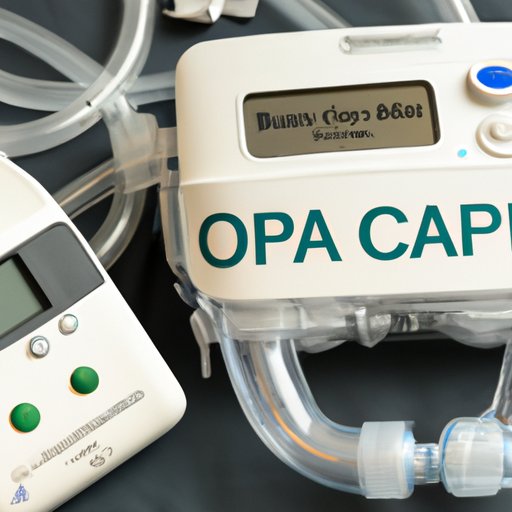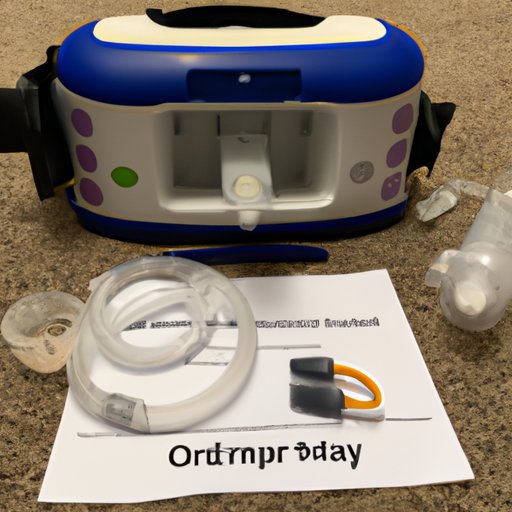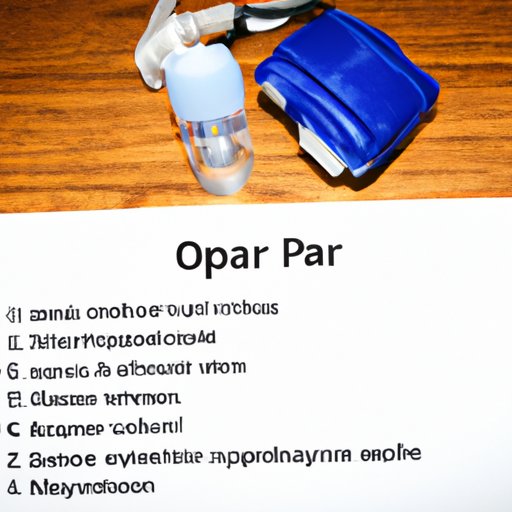
Overview of CPAP Machines: What They Are and How They Work
Continuous Positive Airway Pressure (CPAP) machines are devices that provide a steady stream of air into the patient’s lungs in order to treat sleep apnea. The pressure from the air helps keep the airways open and allows for easier breathing during sleep. CPAP machines are considered to be one of the most effective treatments for sleep apnea.
Sleep apnea is a disorder characterized by pauses in breathing or shallow breaths while sleeping. These pauses can last anywhere from a few seconds to minutes, and they can occur multiple times throughout the night. Sleep apnea can lead to serious health complications such as high blood pressure, heart disease, stroke, and other conditions.
CPAP machines work by delivering a continuous flow of pressurized air through a mask that fits over the nose and mouth. This pressurized air helps keep the airways open, allowing patients to breathe more easily throughout the night. The pressure settings on the machine can be adjusted depending on the needs of the individual patient.
CPAP therapy has been found to be highly effective in treating sleep apnea. Studies have shown that using a CPAP machine can reduce symptoms of sleep apnea by up to 90%, and can improve overall quality of life. In addition to reducing symptoms of sleep apnea, CPAP therapy can also help improve snoring, reduce daytime fatigue, and increase energy levels.

Exploring the Components of a CPAP Machine and How It Operates
A CPAP machine consists of several components that work together to provide the necessary air pressure for treatment. The main components of a CPAP machine include the power supply, tubing, mask, humidifier, and filter. Each component serves a specific purpose and contributes to the overall functioning of the machine.
The power supply is the main source of power for the CPAP machine. It supplies the necessary electricity to run the motor, which powers the blower. The blower then pushes air through the tubing and into the mask. The mask is a device that fits over the nose and mouth and is connected to the tubing. The air pressure generated by the blower is delivered through the mask and into the lungs.
The humidifier is an optional component of a CPAP machine. It adds moisture to the air being delivered through the mask, helping to prevent dryness and irritation in the airways. The filter is also an optional component and helps to remove any dust or debris from the air before it is delivered to the lungs.
The components of a CPAP machine work together to create a continuous flow of air pressure that keeps the airways open and allows for easier breathing. The pressure settings on the machine can be adjusted depending on the needs of the individual patient.
Understanding the Benefits of CPAP Therapy and Its Effects on Sleep Apnea
CPAP therapy has been found to be highly effective in treating sleep apnea. Studies have shown that using a CPAP machine can reduce symptoms of sleep apnea by up to 90%. The air pressure created by the machine helps to keep the airways open and prevents pauses in breathing. As a result, patients experience improved sleep quality, reduced snoring, and increased energy levels.
In addition to improving sleep apnea symptoms, CPAP therapy can also help improve overall health. Studies have shown that using a CPAP machine can lower blood pressure, reduce the risk of heart attack and stroke, and even help with weight loss. Furthermore, CPAP therapy can help reduce the risk of car accidents due to drowsy driving.
An In-Depth Look at the Different Types of CPAP Machines Available
There are a variety of different types of CPAP machines available on the market today. Each type offers different features and benefits, so it’s important to understand the differences between them. Some of the most common types of CPAP machines include fixed-pressure machines, auto-adjusting machines, bi-level machines, and travel machines.
Fixed-pressure machines provide a consistent level of air pressure throughout the night. Auto-adjusting machines automatically adjust the air pressure based on the individual’s changing needs. Bi-level machines provide two different levels of air pressure, one for inhalation and one for exhalation. Lastly, travel machines are designed to be portable and are ideal for those who need to take their CPAP machine with them when they travel.
Examining the Maintenance Requirements for CPAP Machines
In order to ensure that your CPAP machine is working properly, it’s important to regularly maintain and clean it. The frequency of maintenance will depend on the type of machine you have. Generally speaking, the tubing, mask, and humidifier should be cleaned at least once a week. The filters should be replaced every 1-3 months, depending on the type of filter. Additionally, the entire machine should be inspected and serviced by a qualified technician at least once a year.

Tips for Ensuring Proper Use of CPAP Machines to Maximize Results
Using a CPAP machine correctly is essential for maximizing its effectiveness. The first step is to make sure the mask fits properly and is comfortable. It’s important to wear the mask for the entire duration of sleep in order to receive the full benefit of the therapy. Additionally, it may take some time to get used to wearing the mask and other accessories, so it’s important to be patient and not give up.
If any problems arise with the machine, it’s important to troubleshoot them right away. Most CPAP machines come with a user manual that provides instructions on how to address any issues. If the problem persists, it’s best to contact the manufacturer or a qualified technician for assistance.
By following these tips and properly maintaining your CPAP machine, you can ensure that you are receiving the full benefits of the therapy. With regular use and proper care, CPAP therapy can help you improve your sleep and overall quality of life.
(Note: Is this article not meeting your expectations? Do you have knowledge or insights to share? Unlock new opportunities and expand your reach by joining our authors team. Click Registration to join us and share your expertise with our readers.)
